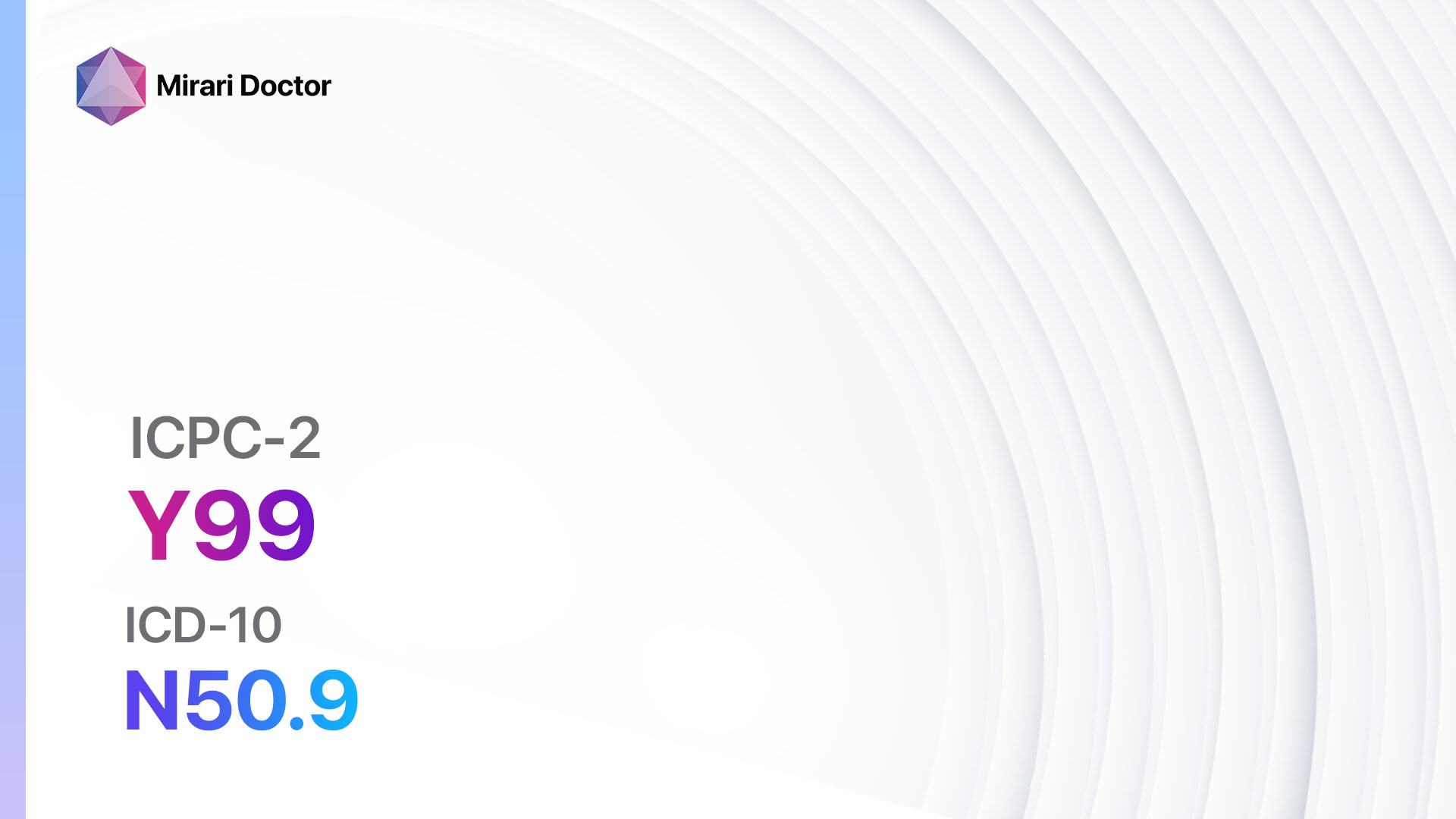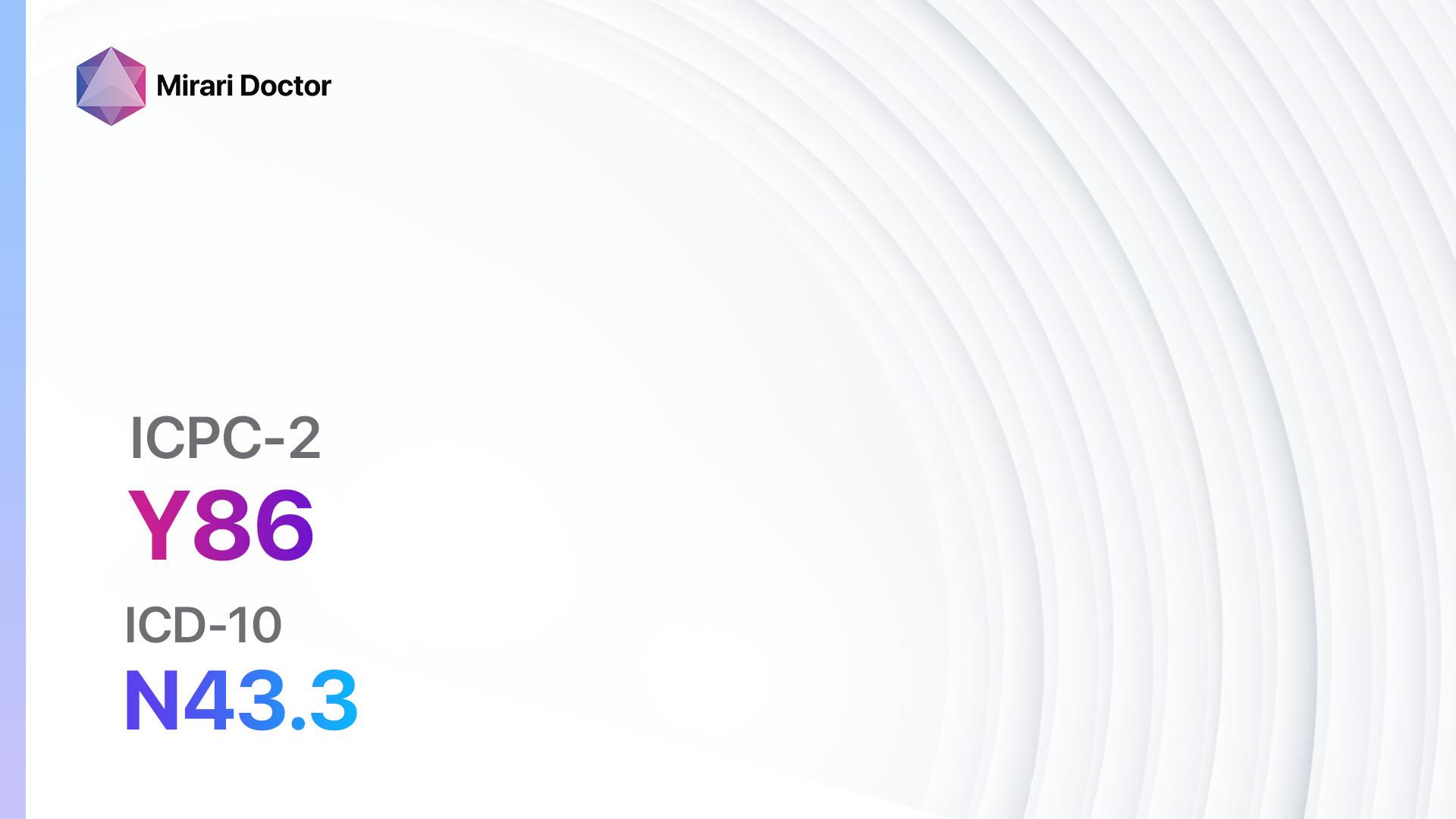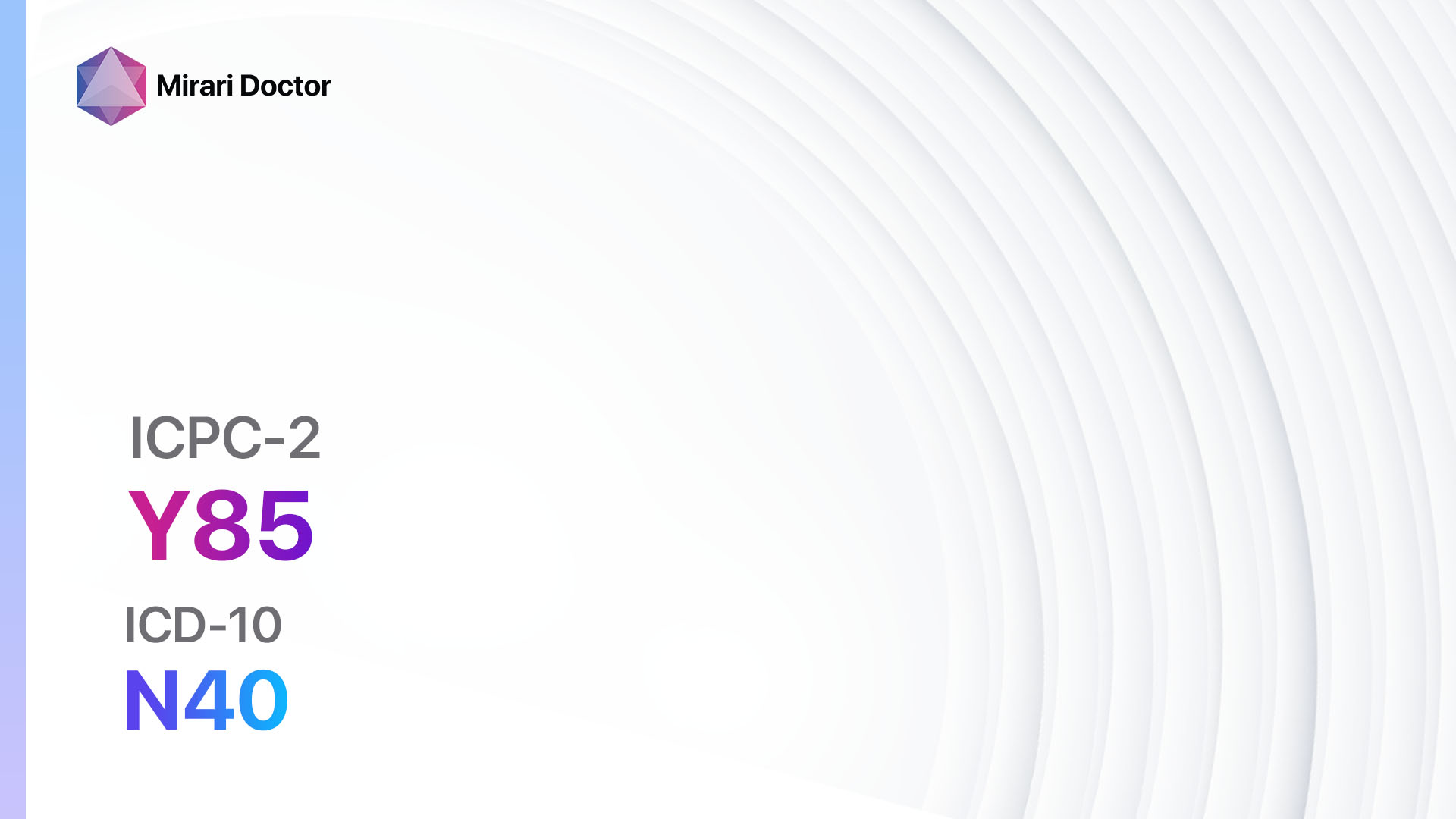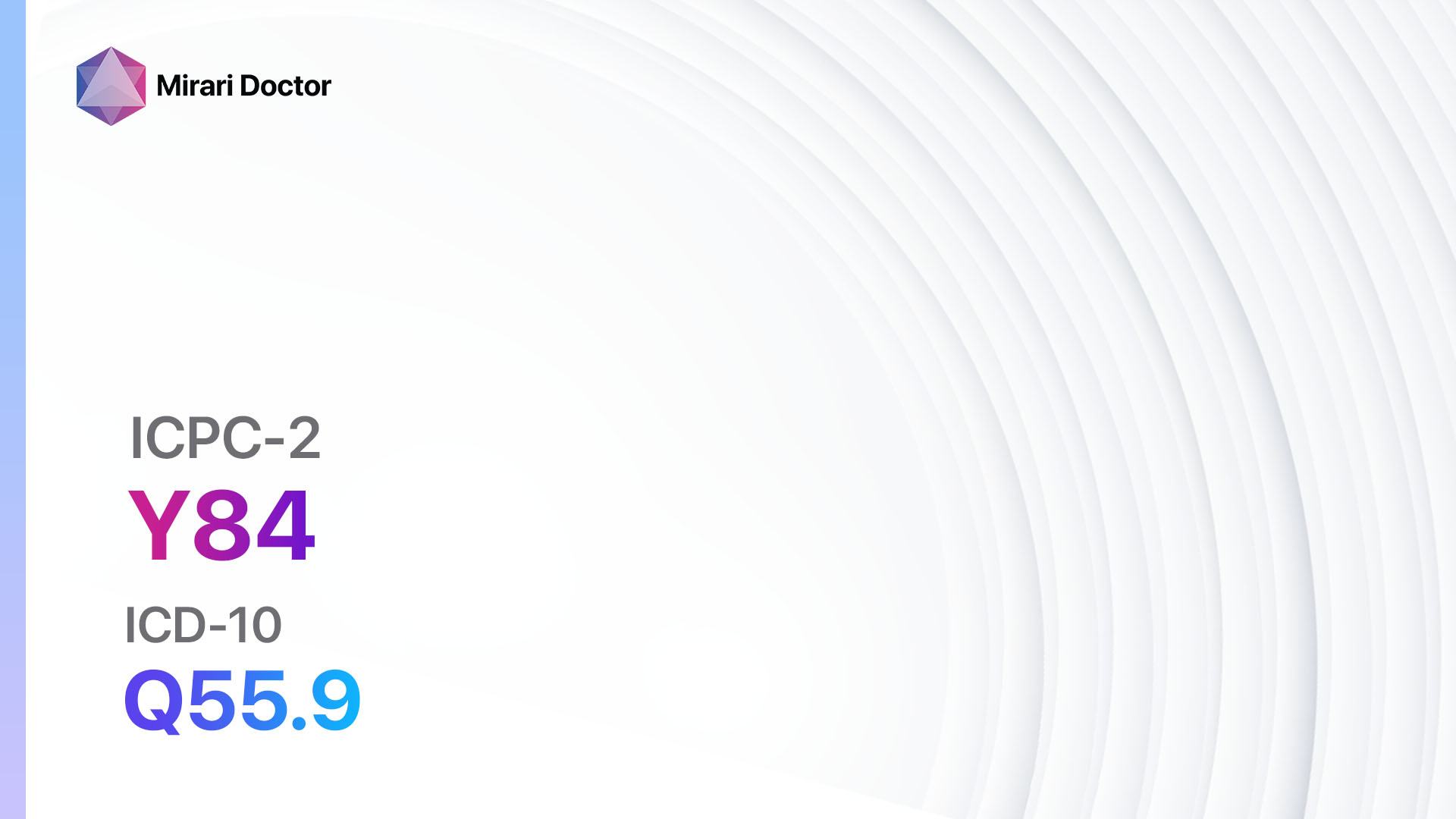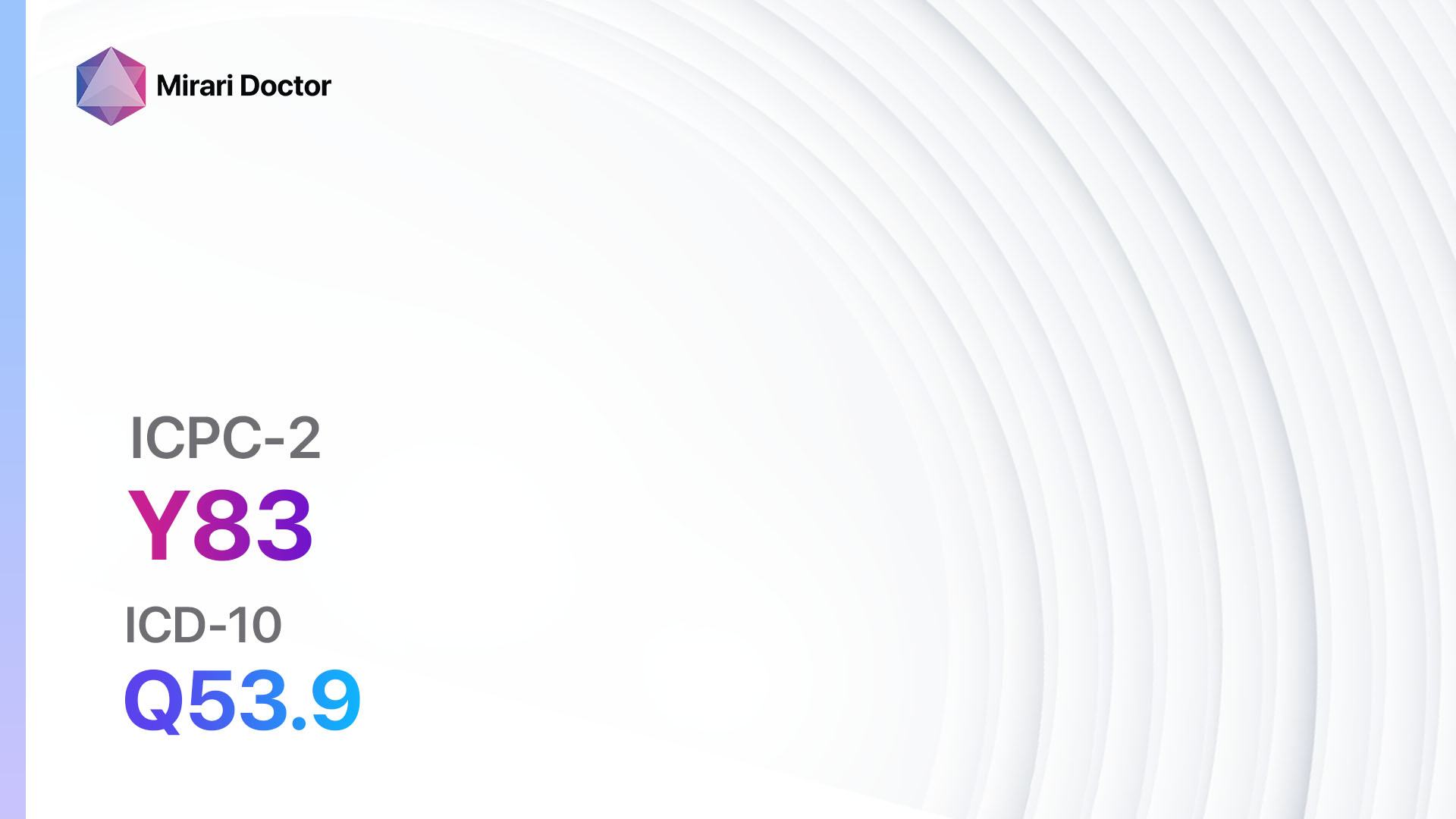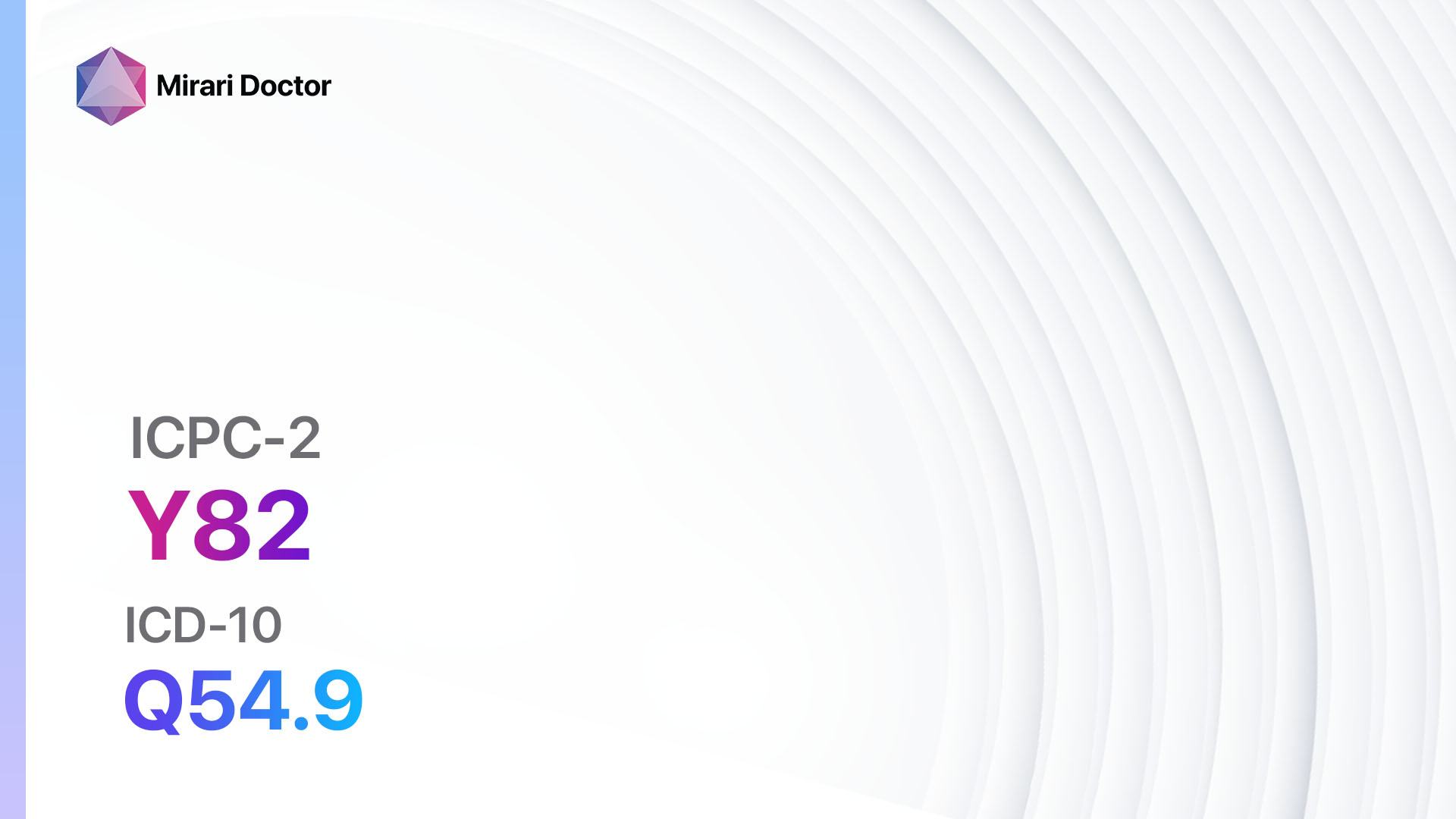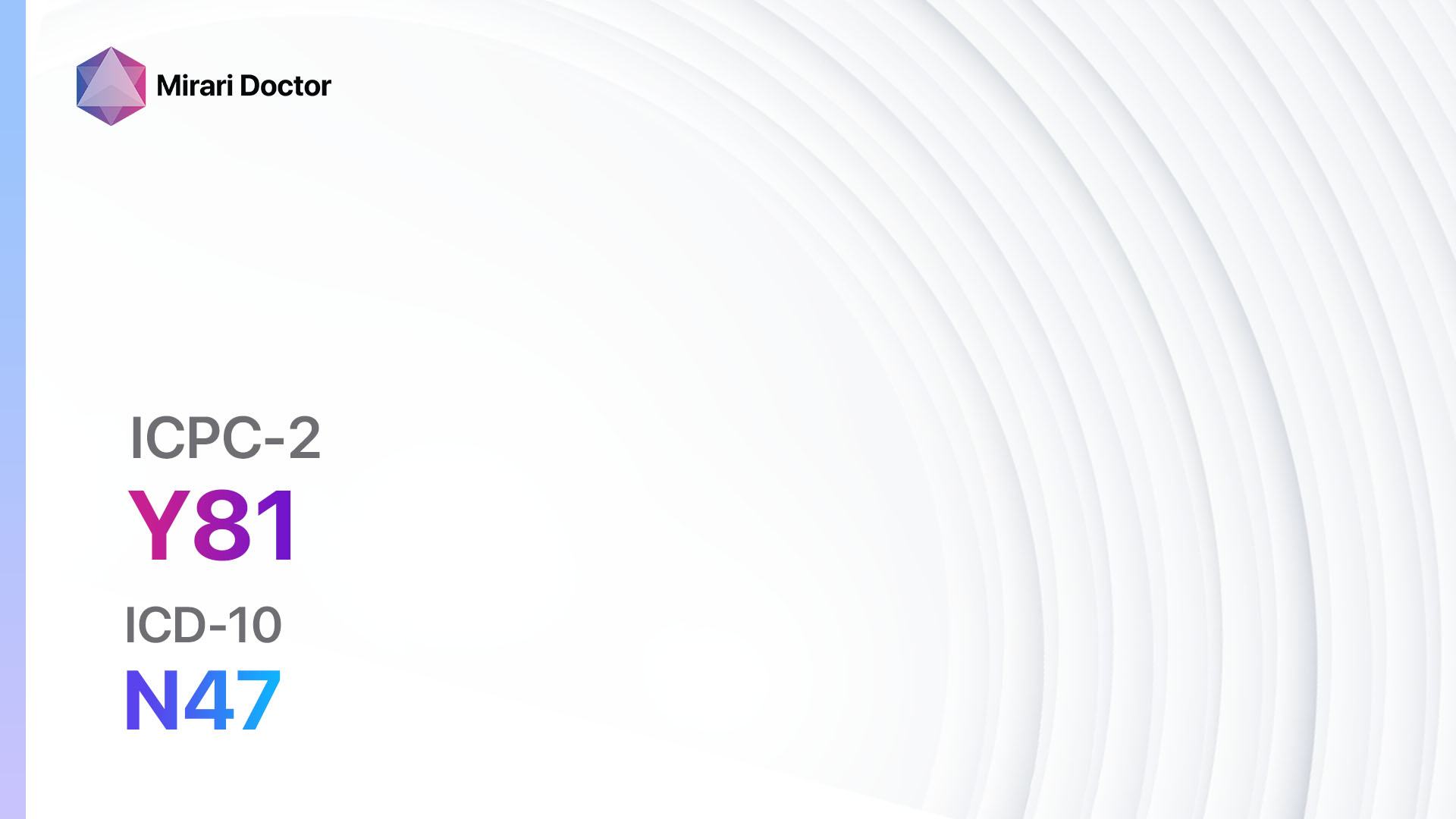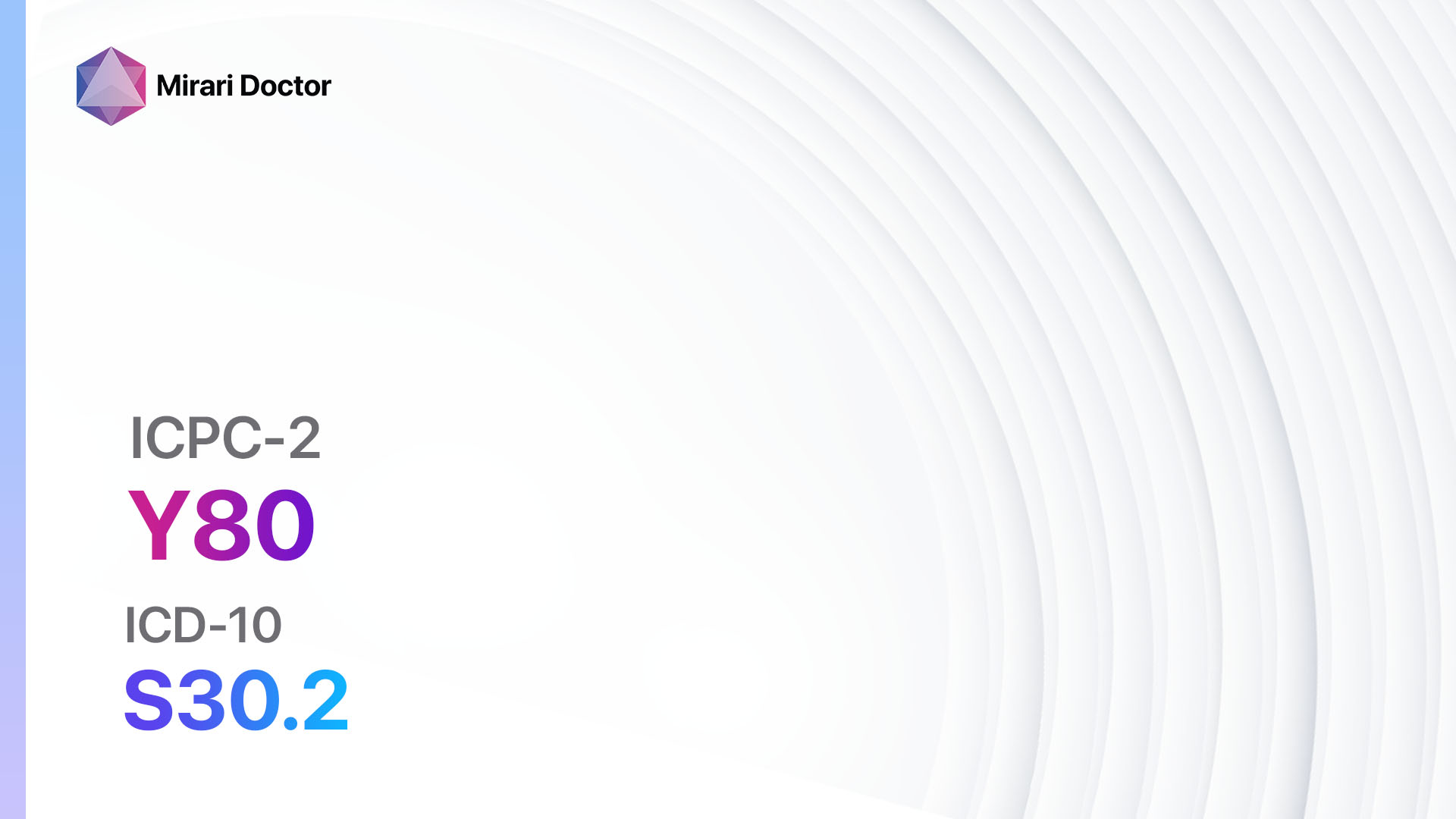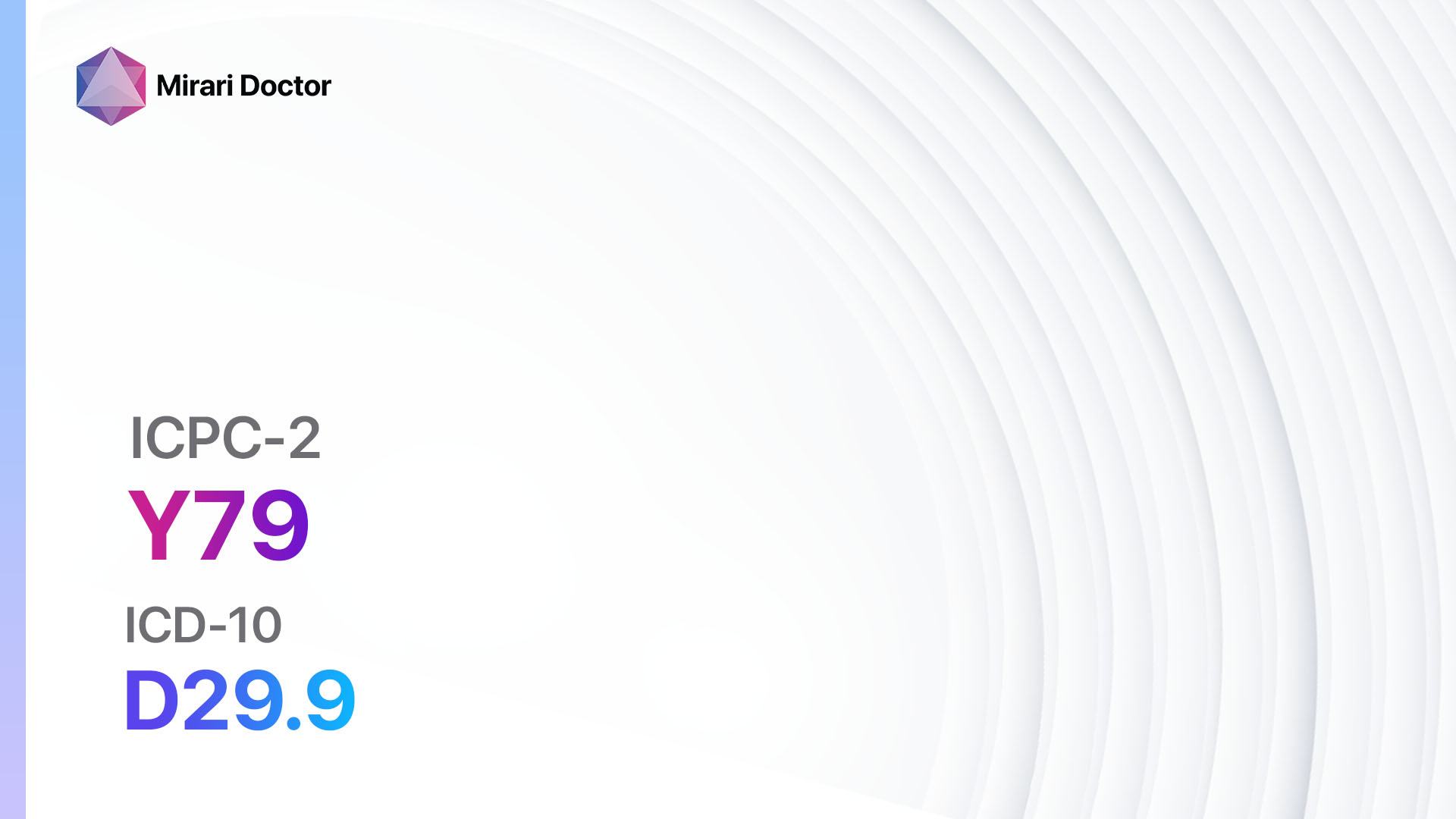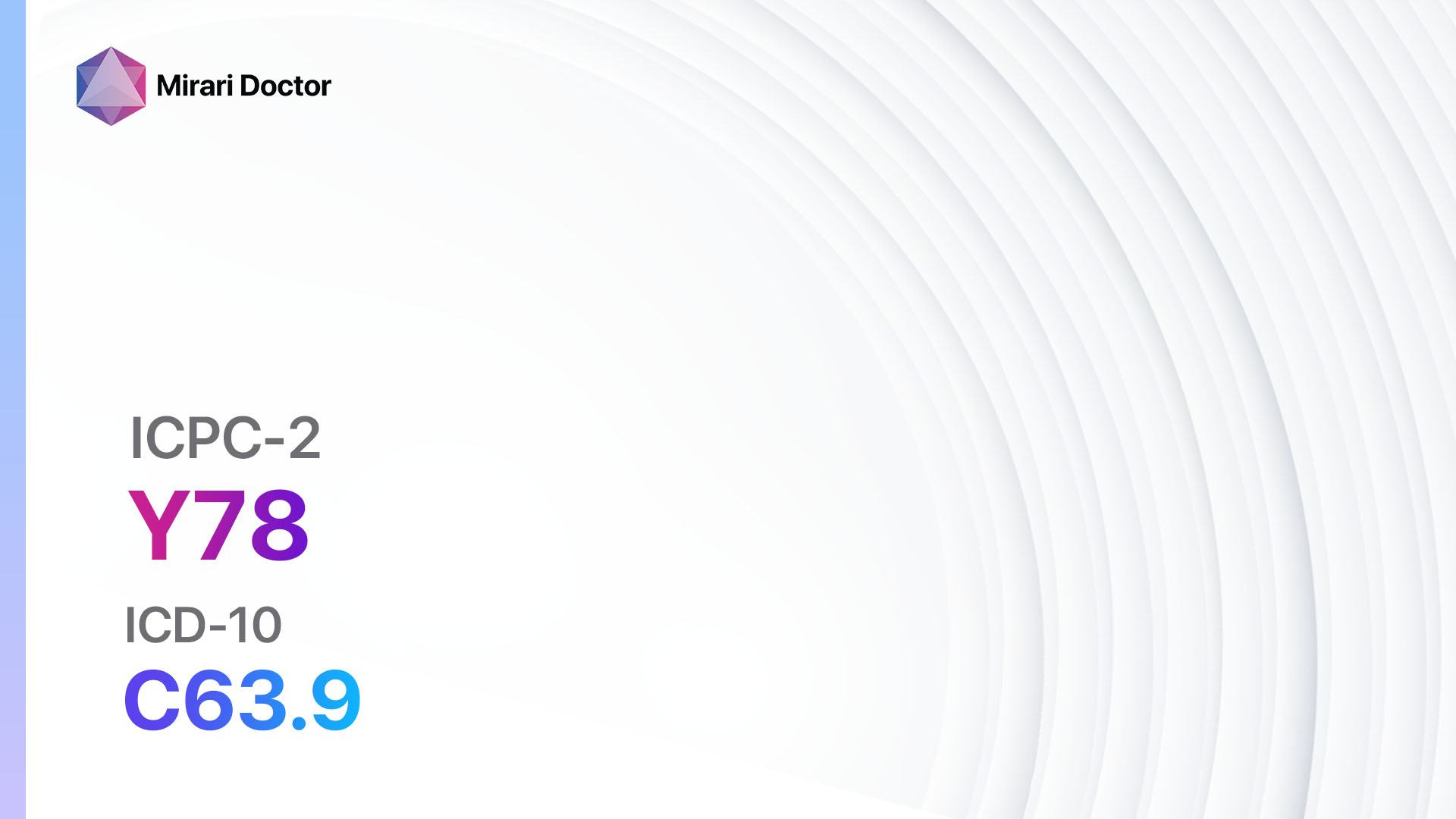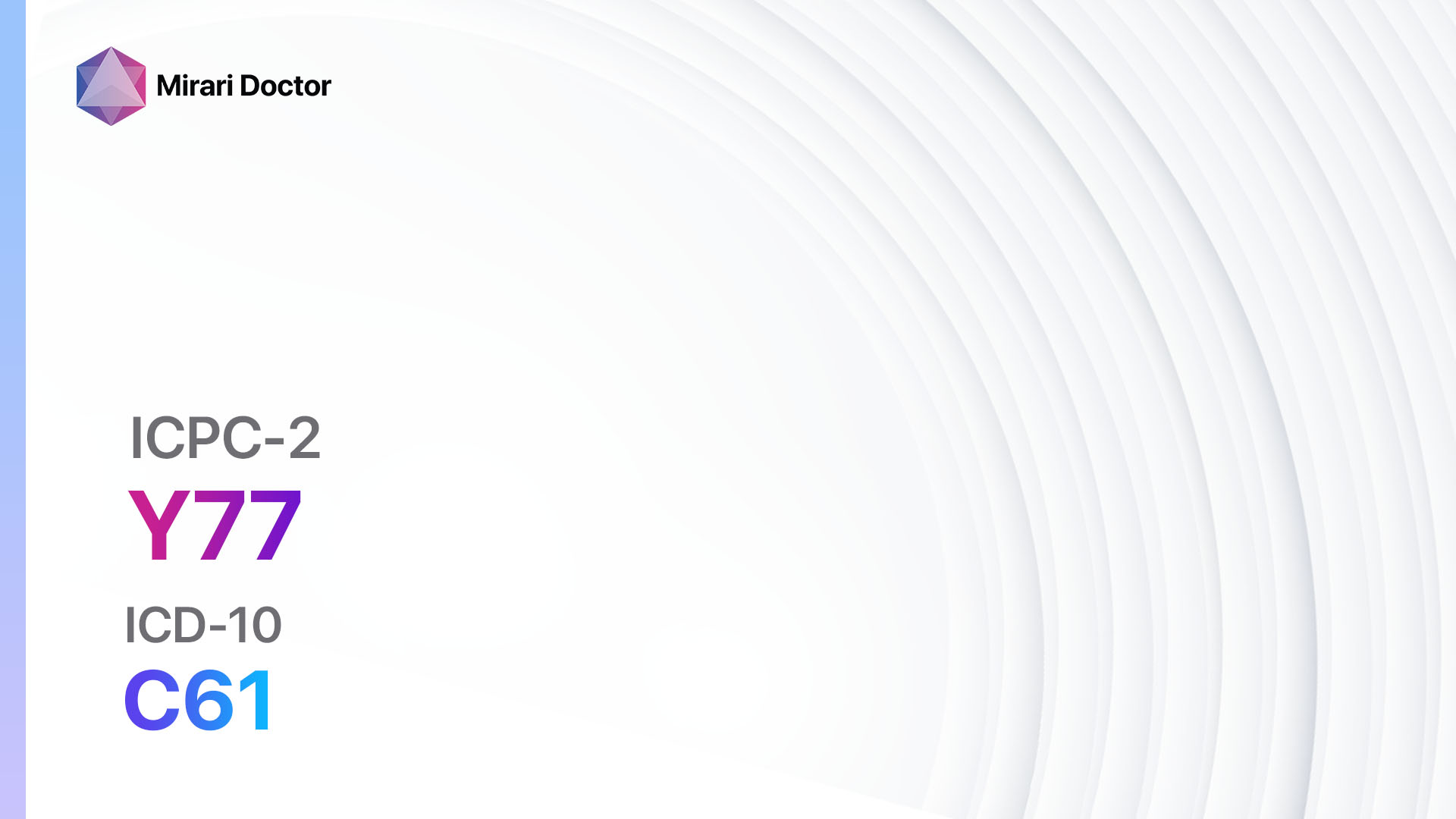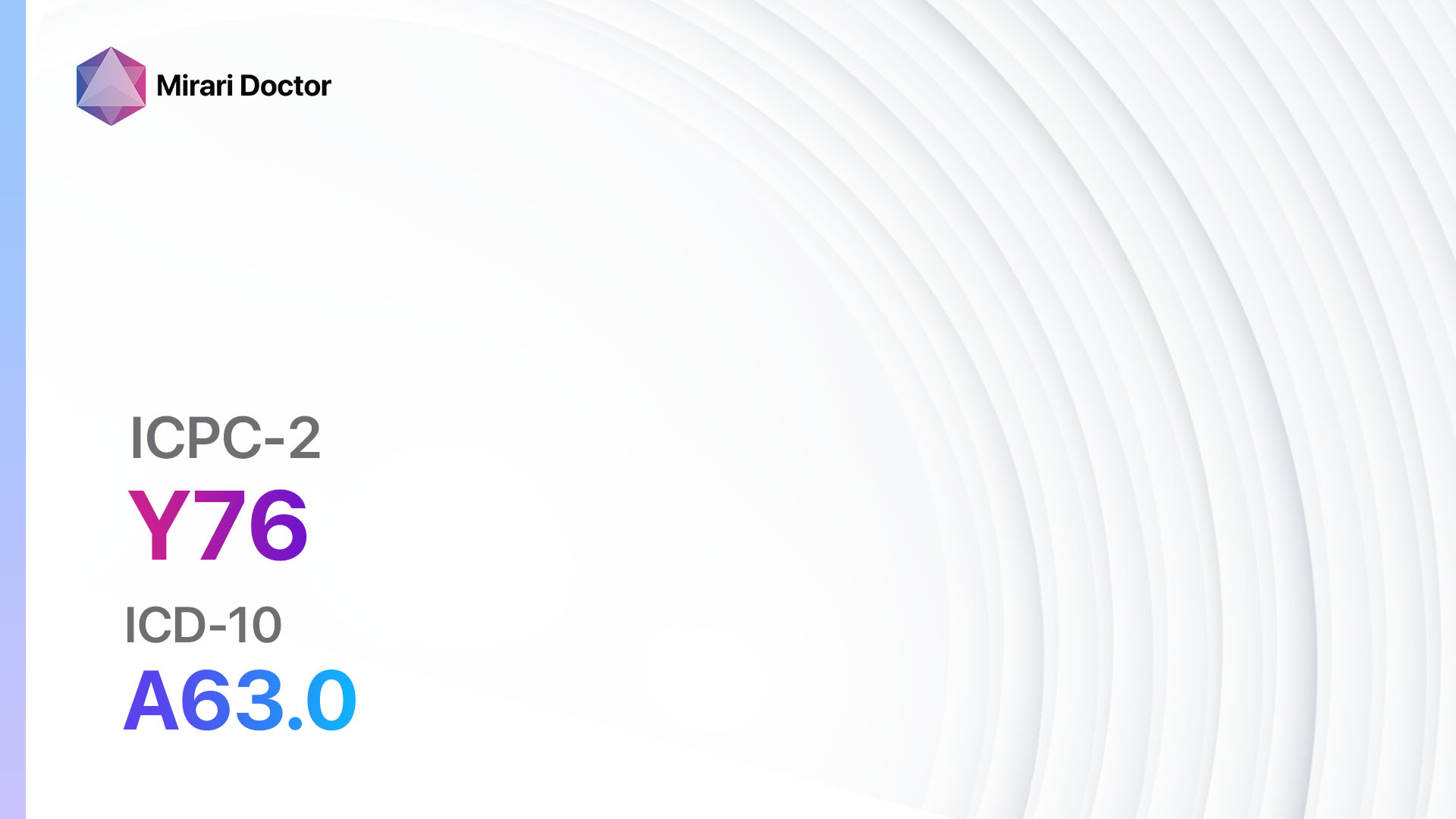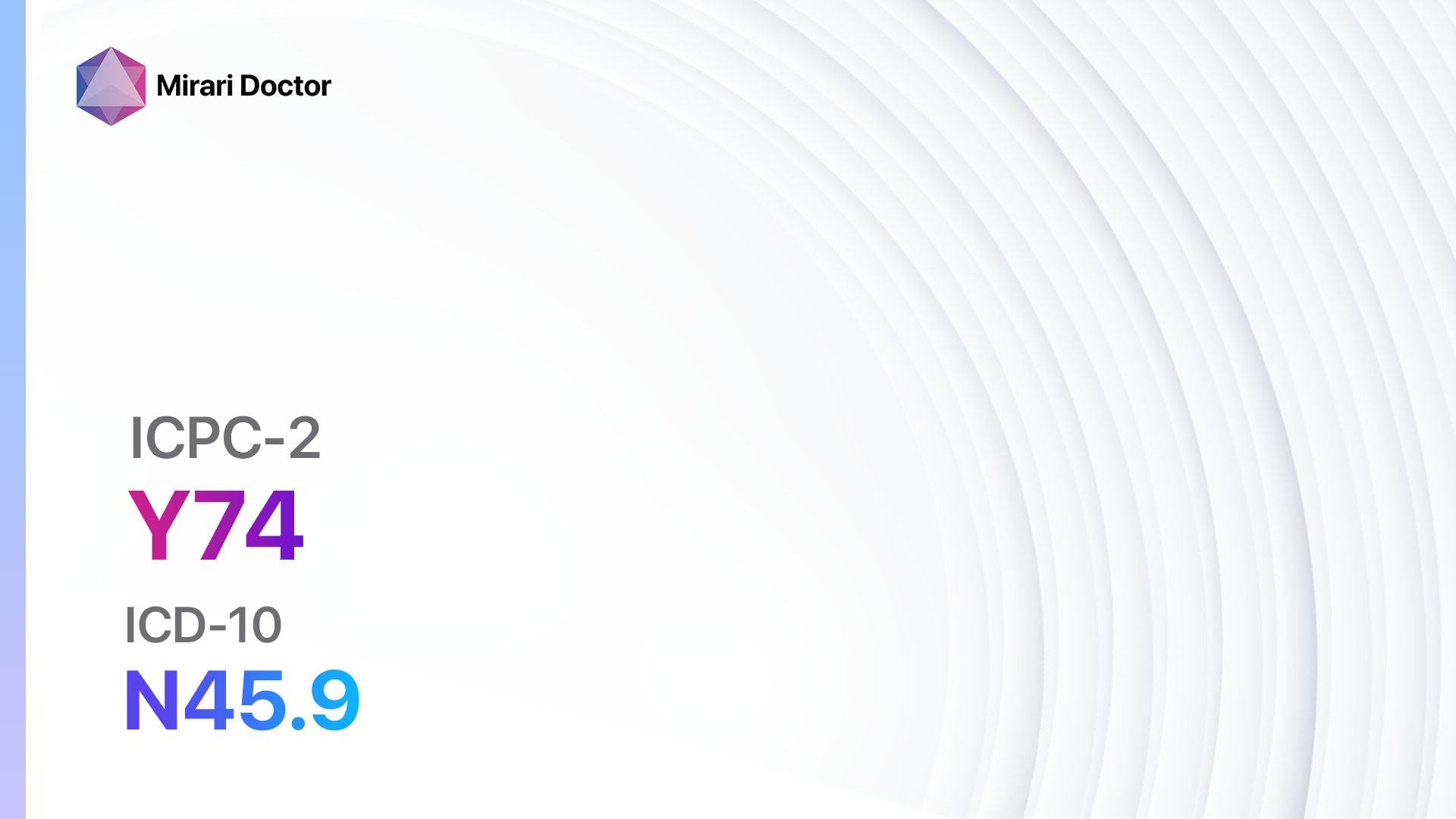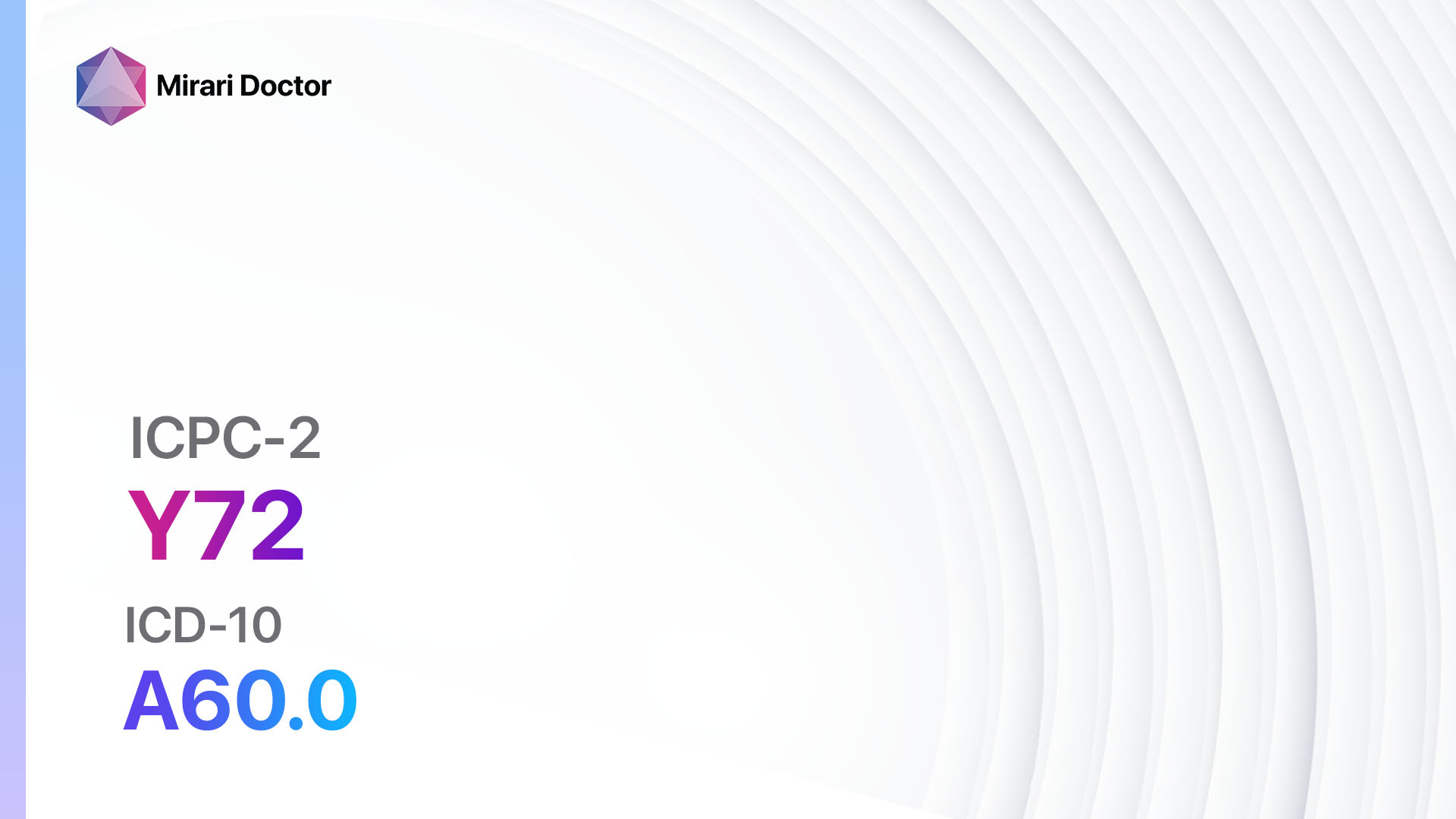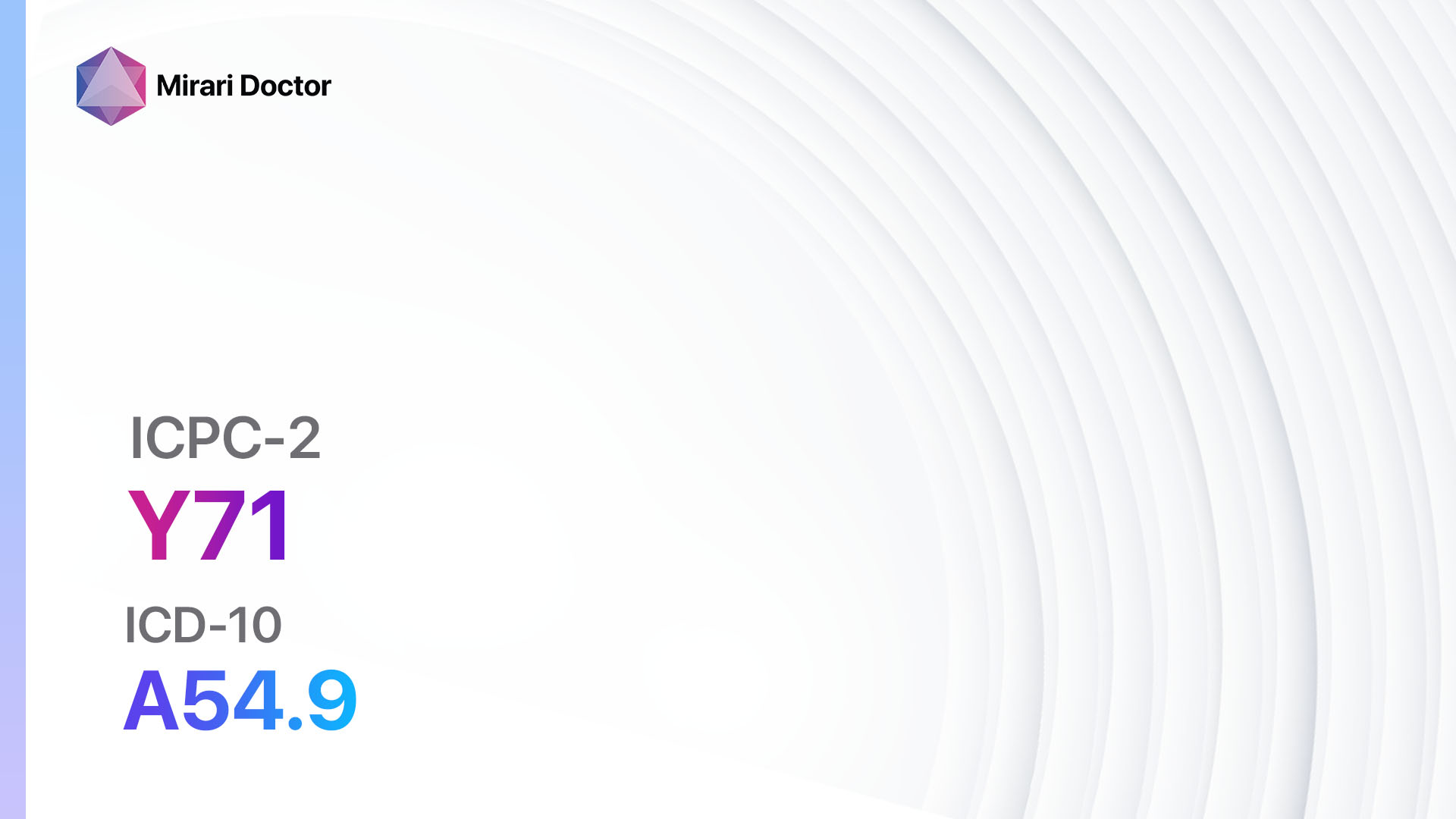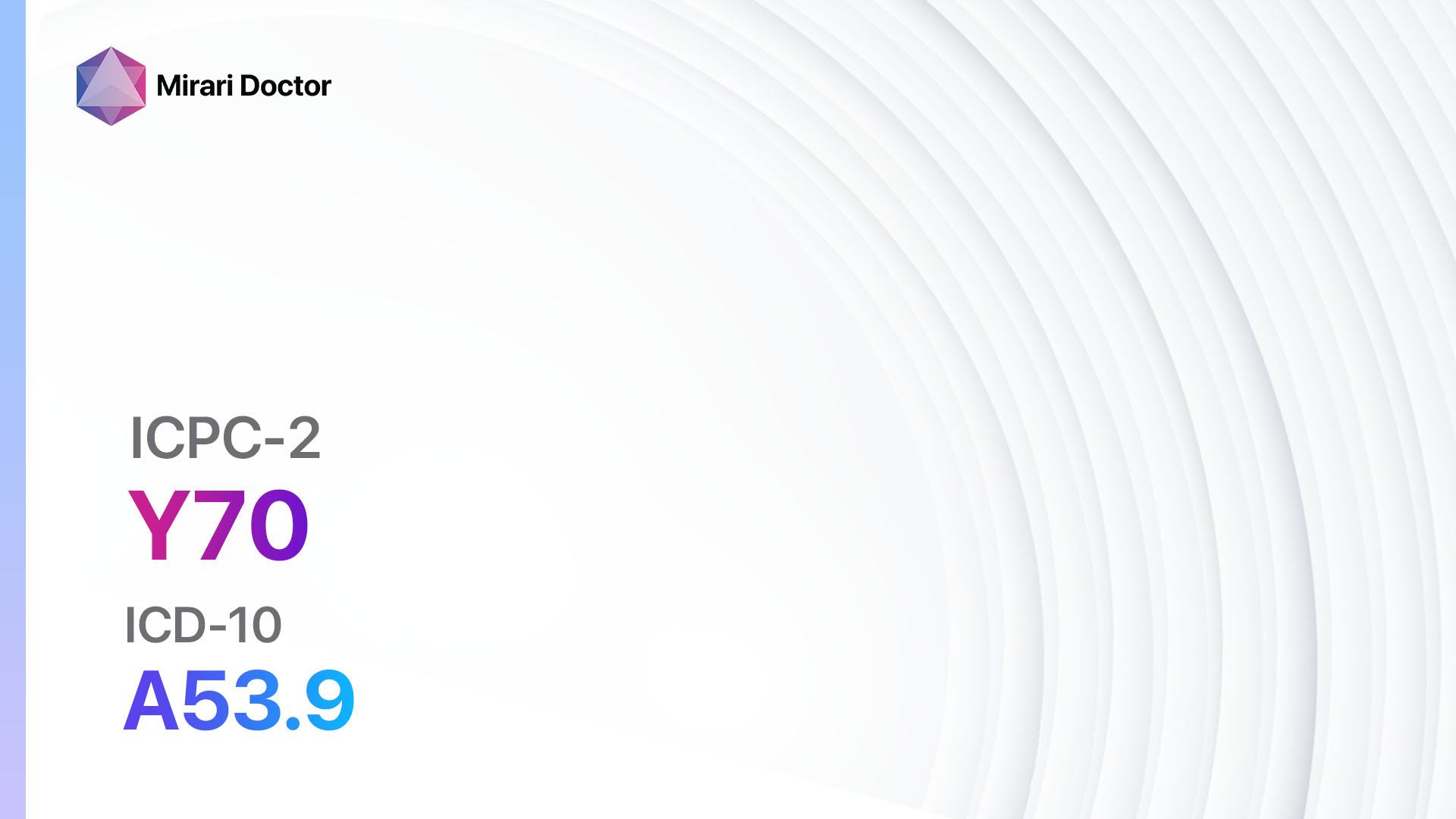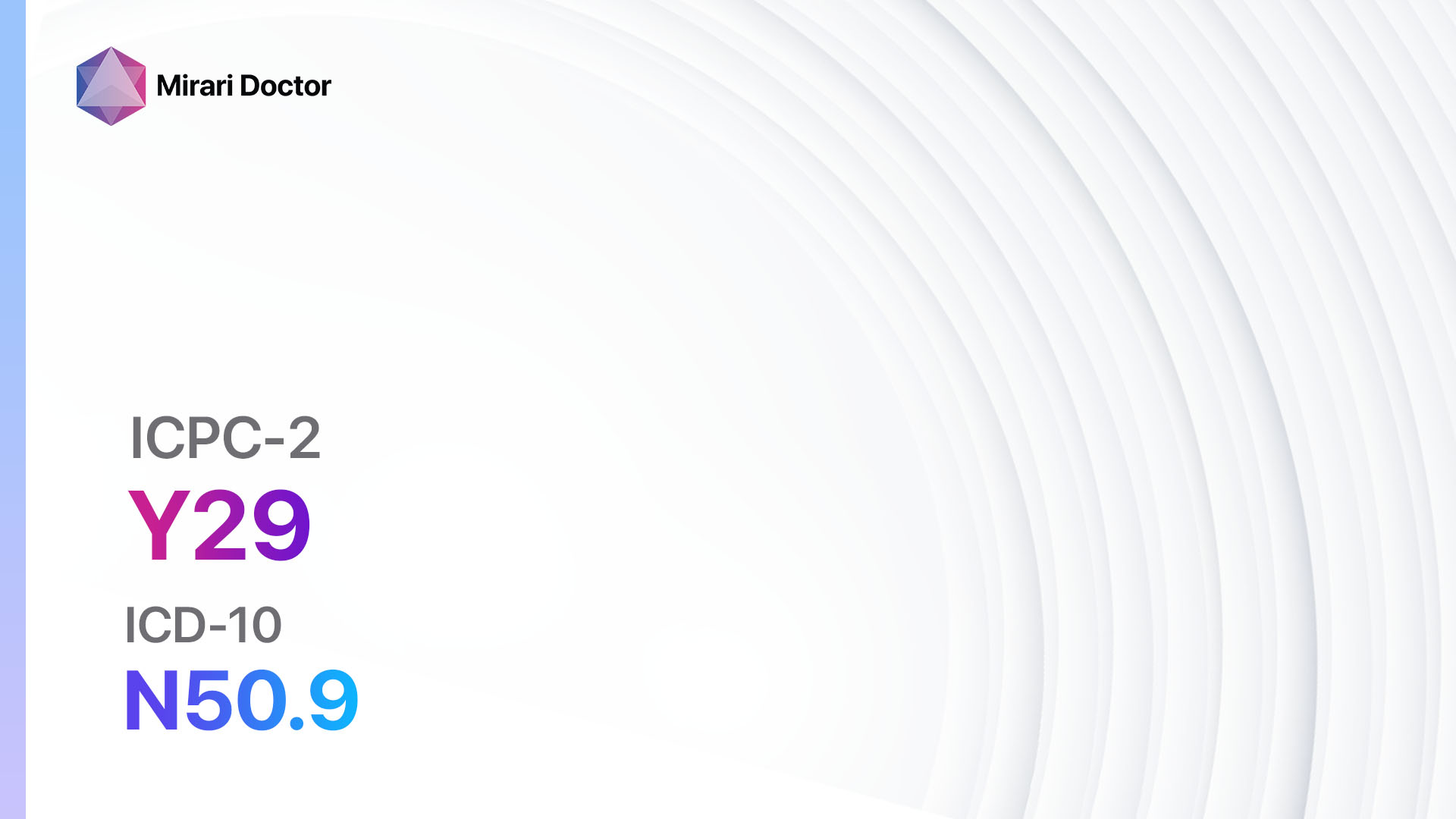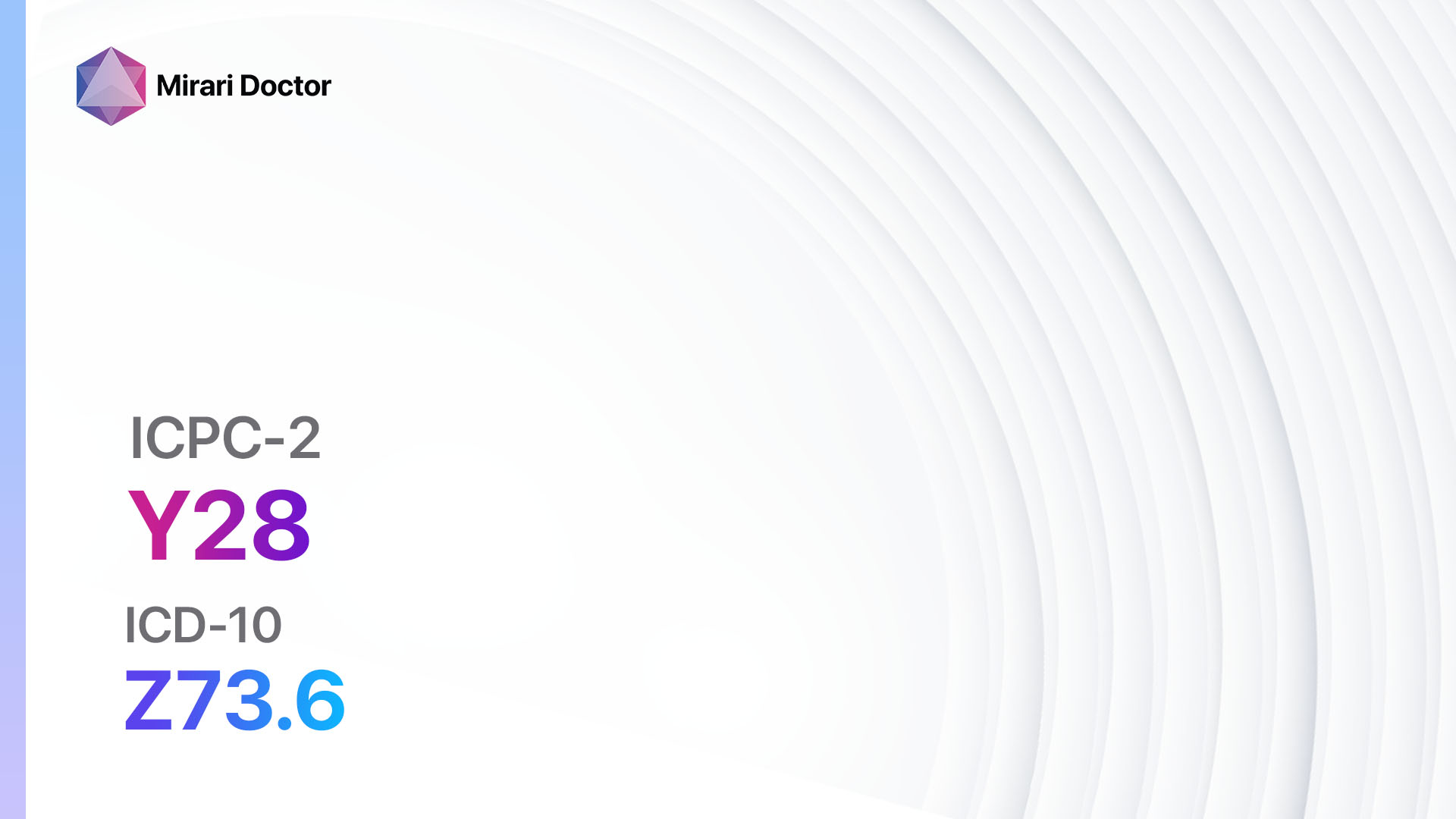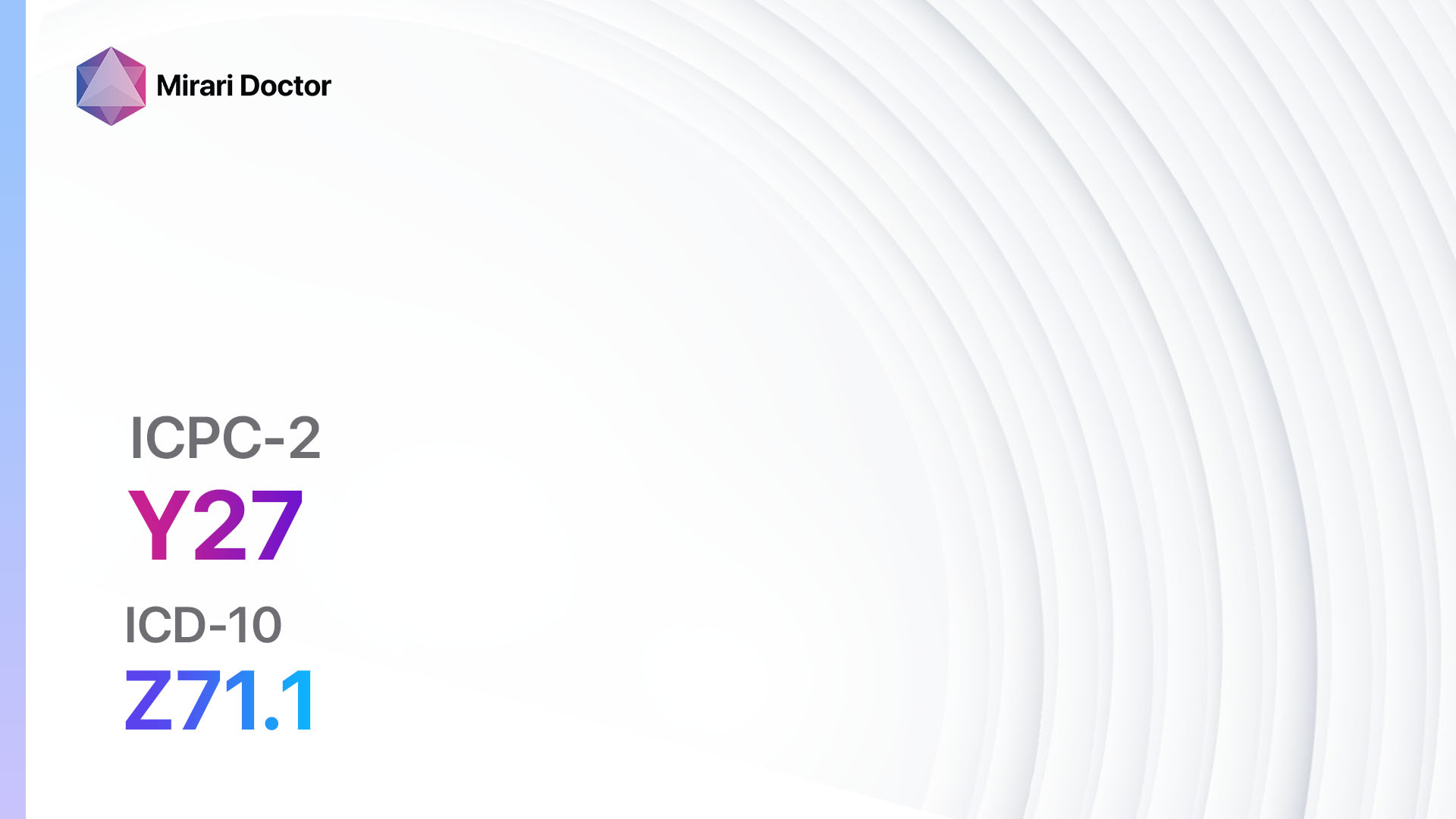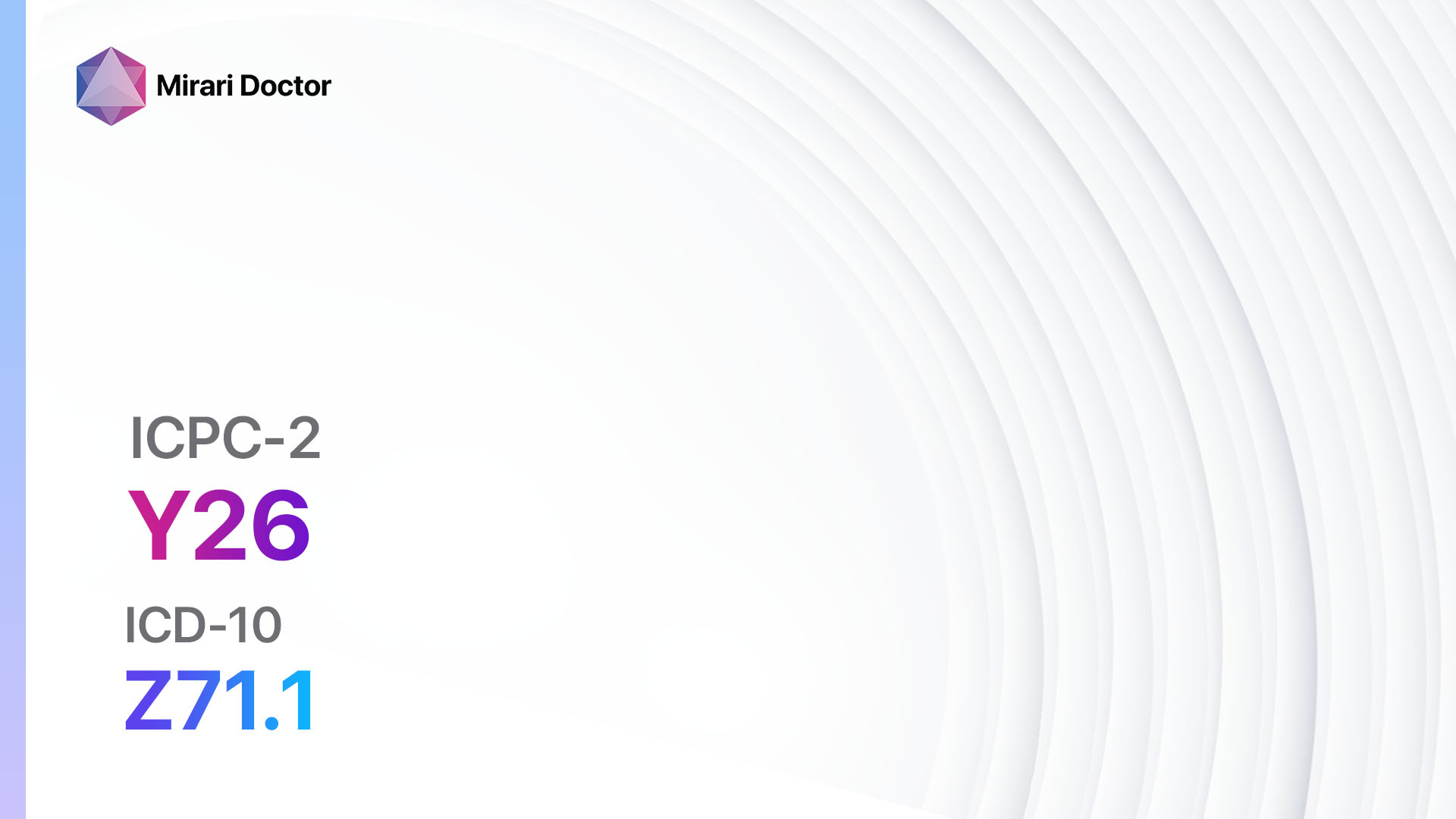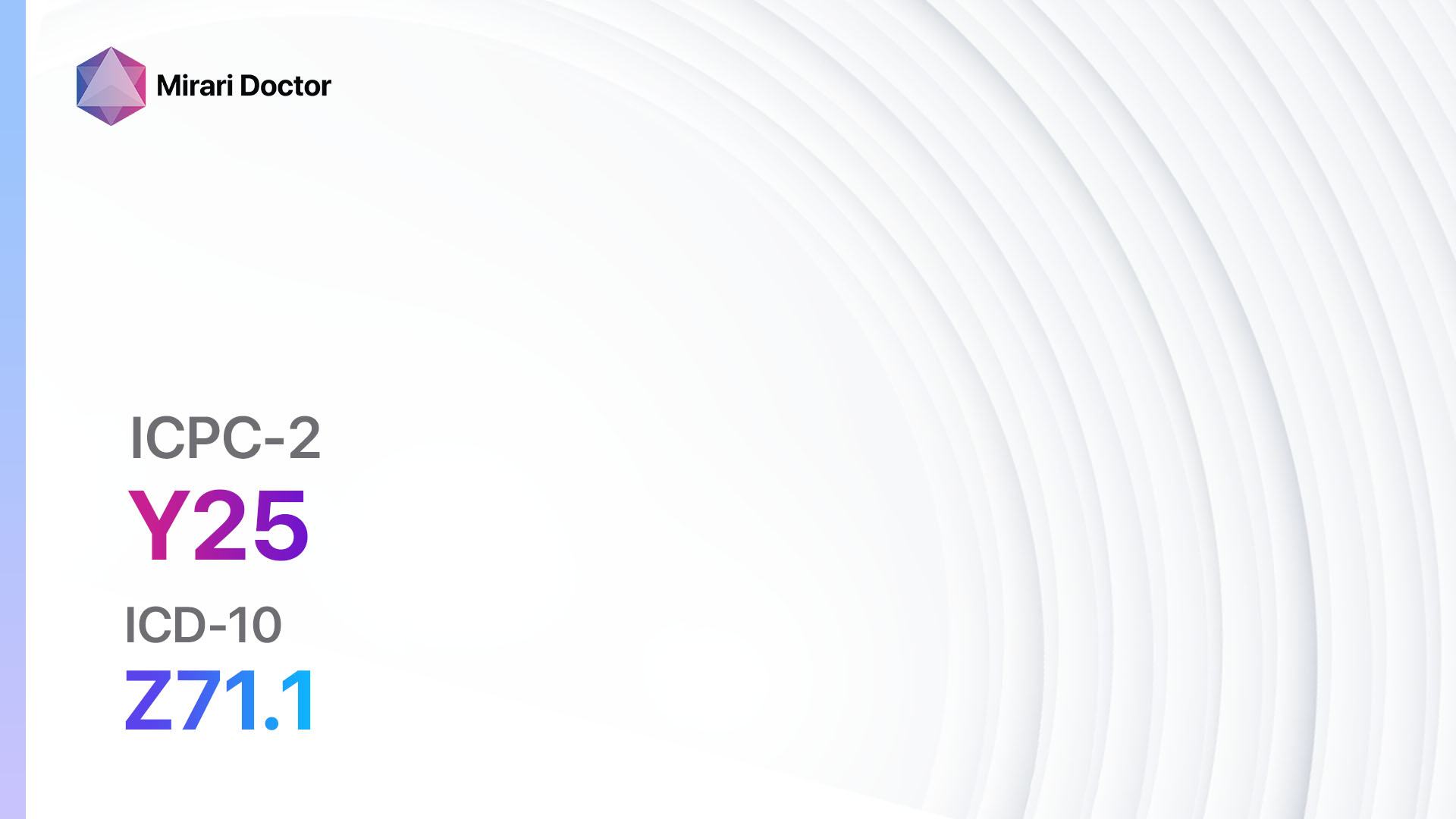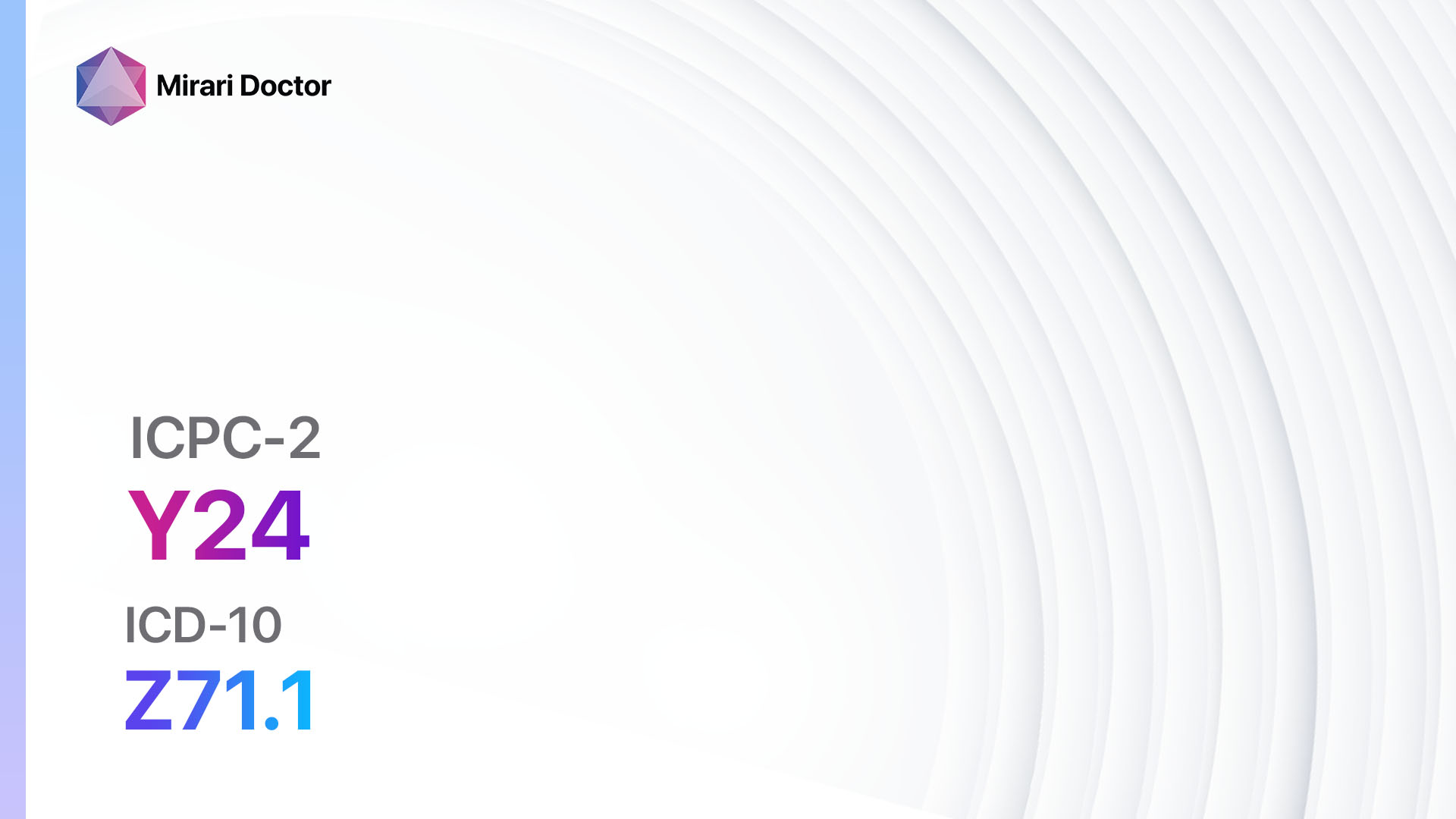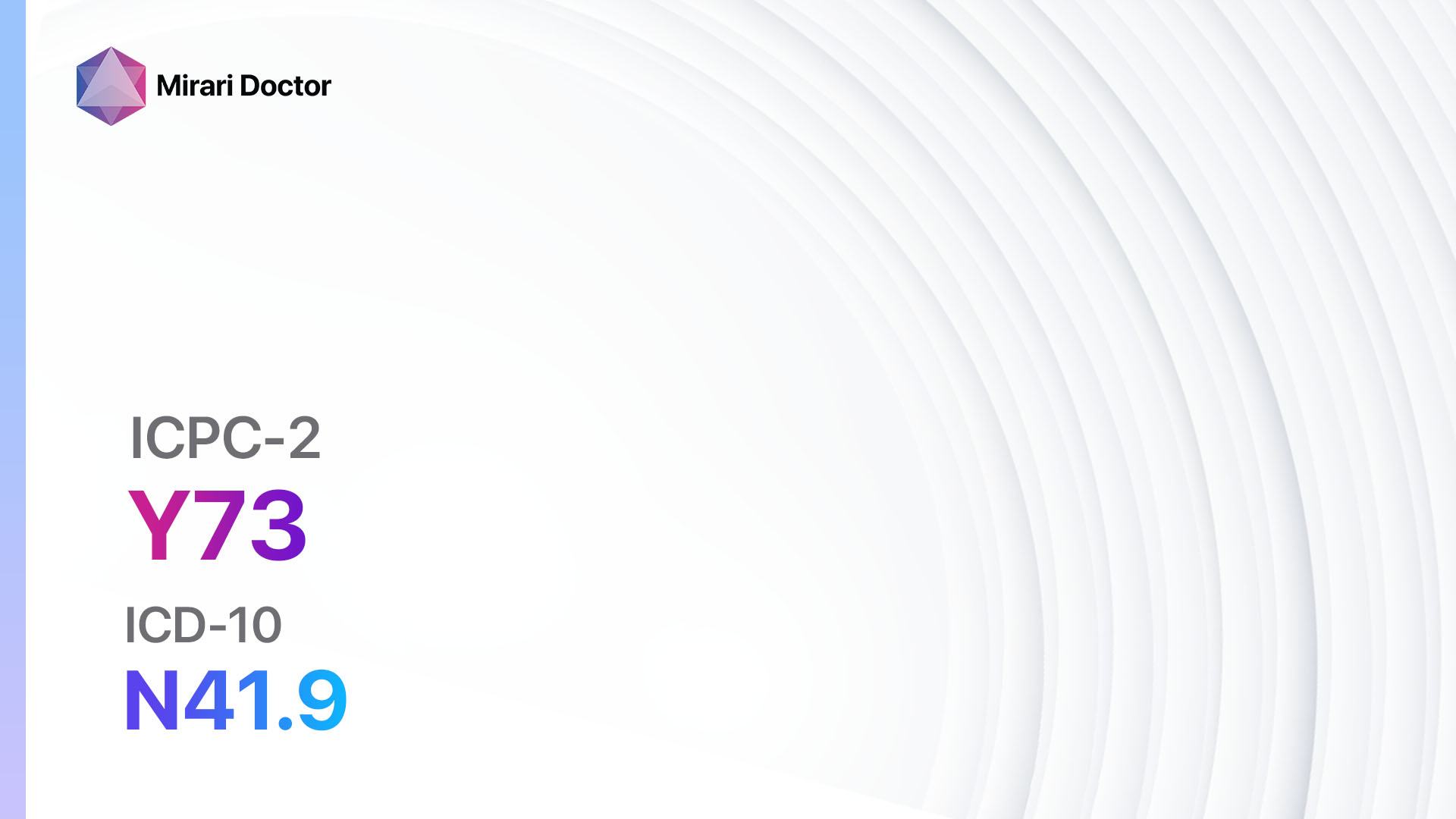
Introduction
Prostatitis is the inflammation of the prostate gland, which is located below the bladder in men. Seminal vesiculitis is the inflammation of the seminal vesicles, which are responsible for producing semen. These conditions can cause significant discomfort and affect the quality of life for affected individuals[1]. The aim of this guide is to provide healthcare professionals with an overview of the symptoms, causes, diagnostic steps, possible interventions, and lifestyle interventions for prostatitis/seminal vesiculitis.
Codes
- ICPC-2 Code: Y73 Prostatitis/seminal vesiculitis
- ICD-10 Code: N41.9 Inflammatory disease of prostate, unspecified
Symptoms
- Frequent urination: Patients may experience the need to urinate more frequently, often with a sense of urgency[2].
- Pain or discomfort: Patients may experience pain or discomfort in the lower abdomen, groin, or lower back[3].
- Painful ejaculation: Ejaculation may be accompanied by pain or discomfort[4].
- Blood in semen: Patients may notice blood in their semen[5].
- Erectile dysfunction: Some patients may experience difficulty achieving or maintaining an erection[6].
- Fever and chills: In some cases, patients may develop a fever and experience chills[7].
Causes
- Bacterial infection: Prostatitis/seminal vesiculitis can be caused by a bacterial infection, commonly due to urinary tract infections or sexually transmitted infections[8].
- Non-bacterial inflammation: In some cases, inflammation of the prostate or seminal vesicles can occur without an identifiable bacterial infection. This is known as non-bacterial prostatitis/seminal vesiculitis[9].
Diagnostic Steps
Medical History
- Obtain a comprehensive medical history, including any previous urinary tract infections, sexually transmitted infections, or prostate-related conditions[10].
- Inquire about the patient’s symptoms, including the duration, severity, and any factors that may exacerbate or alleviate the symptoms.
- Identify any risk factors, such as recent sexual activity or a history of prostate-related conditions.
Physical Examination
- Conduct a thorough physical examination, including a digital rectal examination to assess the size, shape, and tenderness of the prostate gland.
- Assess for any signs of inflammation or infection, such as redness or swelling in the genital area.
- Check for any abnormalities in the urinary system, such as enlarged lymph nodes or tender seminal vesicles.
Laboratory Tests
- Urine analysis: A urine sample can be analyzed for the presence of bacteria, blood, or other abnormalities.
- Semen analysis: Semen can be analyzed for the presence of bacteria, white blood cells, and other abnormalities.
- Blood tests: Blood tests can be conducted to assess for signs of infection or inflammation, such as elevated white blood cell count or C-reactive protein levels.
- Prostate-specific antigen (PSA) test: This blood test can help rule out prostate cancer as a cause of the symptoms.
Diagnostic Imaging
- Transrectal ultrasound (TRUS): This imaging modality can provide detailed images of the prostate gland and seminal vesicles, allowing for the identification of any structural abnormalities or signs of inflammation.
- Magnetic resonance imaging (MRI): In cases where a more detailed evaluation is required, an MRI can be performed to visualize the prostate gland and surrounding structures with greater clarity.
Other Tests
- Urodynamic studies: These tests can assess the function of the urinary system, including the bladder and urethra, to identify any abnormalities that may contribute to the symptoms.
- Cystoscopy: A thin, flexible tube with a camera can be inserted into the urethra to visualize the bladder and urethra for any signs of inflammation or structural abnormalities.
Follow-up and Patient Education
- Follow up with the patient to monitor the effectiveness of the chosen intervention and to address any concerns or questions.
- Provide patient education on the condition, including the importance of completing the full course of prescribed medications, the potential need for lifestyle modifications, and the importance of regular follow-up appointments.
Possible Interventions
Traditional Interventions
Medications:
Top 5 drugs for Prostatitis/Seminal Vesiculitis:
- Antibiotics (e.g., Ciprofloxacin, Trimethoprim-sulfamethoxazole):
- Cost: Generic versions can range from $10 to $50 for a course of treatment.
- Contraindications: Hypersensitivity to the medication, known resistance to the specific antibiotic.
- Side effects: Nausea, diarrhea, allergic reactions.
- Severe side effects: Tendon rupture, severe allergic reactions.
- Drug interactions: Warfarin, certain antacids.
- Warning: Complete the full course of antibiotics as prescribed to avoid antibiotic resistance.
- Alpha-blockers (e.g., Tamsulosin, Alfuzosin):
- Cost: Generic versions can range from $10 to $50 for a month’s supply.
- Contraindications: Hypersensitivity to the medication, severe liver or kidney disease.
- Side effects: Dizziness, low blood pressure, retrograde ejaculation.
- Severe side effects: Priapism (prolonged erection), severe allergic reactions.
- Drug interactions: Other medications that lower blood pressure.
- Warning: Take the medication as prescribed and avoid sudden position changes to prevent dizziness.
- Nonsteroidal anti-inflammatory drugs (NSAIDs) (e.g., Ibuprofen, Naproxen):
- Cost: Over-the-counter versions are affordable, prescription versions can range from $10 to $50.
- Contraindications: History of gastrointestinal bleeding, severe kidney disease.
- Side effects: Upset stomach, stomach ulcers, increased risk of bleeding.
- Severe side effects: Severe allergic reactions, liver and kidney problems.
- Drug interactions: Other NSAIDs, blood thinners.
- Warning: Take with food to minimize the risk of stomach upset and ulcers.
- Muscle relaxants (e.g., Methocarbamol, Cyclobenzaprine):
- Cost: Generic versions can range from $10 to $50 for a month’s supply.
- Contraindications: Hypersensitivity to the medication, certain heart conditions.
- Side effects: Drowsiness, dizziness, dry mouth.
- Severe side effects: Severe allergic reactions, serotonin syndrome.
- Drug interactions: Other medications that cause drowsiness.
- Warning: Avoid driving or operating heavy machinery while taking this medication.
- Antidepressants (e.g., Amitriptyline, Duloxetine):
- Cost: Generic versions can range from $10 to $50 for a month’s supply.
- Contraindications: Hypersensitivity to the medication, recent heart attack.
- Side effects: Dry mouth, drowsiness, constipation.
- Severe side effects: Suicidal thoughts, serotonin syndrome.
- Drug interactions: Other medications that affect serotonin levels.
- Warning: Take the medication as prescribed and report any changes in mood or behavior to a healthcare professional.
Alternative Drugs:
- Herbal supplements: Some herbal supplements, such as saw palmetto or quercetin, have been used in the treatment of prostatitis/seminal vesiculitis. However, their effectiveness and safety have not been well-established. Cost: Varies depending on the specific supplement.
Surgical Procedures:
In certain cases, surgical intervention may be necessary to address underlying structural abnormalities or severe symptoms. The specific surgical procedures will depend on the individual patient’s condition and the recommendations of a urologist. The costs of surgical procedures can vary significantly, ranging from a few thousand dollars to tens of thousands of dollars.
Alternative Interventions
- Acupuncture: May help relieve symptoms and reduce inflammation. Cost: $60-$120 per session.
- Herbal medicine: Traditional Chinese herbal medicine may be used to alleviate symptoms and promote prostate health. Cost: Varies depending on the specific herbs and formulations.
- Physical therapy: Pelvic floor muscle exercises and other physical therapy techniques may help reduce pain and improve muscle function. Cost: $50-$150 per session.
- Prostate massage: This technique involves manually massaging the prostate gland to help relieve symptoms. Cost: Varies depending on the healthcare provider.
- Biofeedback: Biofeedback techniques can help patients gain control over their pelvic muscles and reduce pain. Cost: $50-$150 per session.
Lifestyle Interventions
- Dietary modifications: Encourage patients to consume a balanced diet rich in fruits, vegetables, whole grains, and lean proteins. Avoidance of spicy and acidic foods may also help alleviate symptoms.
- Hydration: Adequate hydration is important to maintain urinary tract health. Encourage patients to drink plenty of water throughout the day.
- Stress management: Stress can worsen symptoms of prostatitis/seminal vesiculitis. Encourage patients to engage in stress-reducing activities, such as exercise, meditation, or relaxation techniques.
- Avoidance of irritants: Patients should avoid substances that may irritate the prostate gland, such as caffeine, alcohol, and spicy foods.
- Regular ejaculation: Regular ejaculation can help relieve symptoms and promote prostate health. Encourage patients to engage in sexual activity or masturbation as appropriate.
It is important to note that the cost ranges provided are approximate and may vary depending on the location and availability of the interventions. Healthcare professionals should consult local resources and guidelines for accurate and up-to-date cost information.
Mirari Cold Plasma Alternative Intervention
Understanding Mirari Cold Plasma
- Safe and Non-Invasive Treatment: Mirari Cold Plasma is a safe and non-invasive treatment option for various skin conditions. It does not require incisions, minimizing the risk of scarring, bleeding, or tissue damage.
- Efficient Extraction of Foreign Bodies: Mirari Cold Plasma facilitates the removal of foreign bodies from the skin by degrading and dissociating organic matter, allowing easier access and extraction.
- Pain Reduction and Comfort: Mirari Cold Plasma has a local analgesic effect, providing pain relief during the treatment, making it more comfortable for the patient.
- Reduced Risk of Infection: Mirari Cold Plasma has antimicrobial properties, effectively killing bacteria and reducing the risk of infection.
- Accelerated Healing and Minimal Scarring: Mirari Cold Plasma stimulates wound healing and tissue regeneration, reducing healing time and minimizing the formation of scars.
Mirari Cold Plasma Prescription
Video instructions for using Mirari Cold Plasma Device – Y73 Prostatitis/seminal vesiculitis (ICD-10:N41.9)
| Mild | Moderate | Severe |
| Mode setting: 2 (Wound Healing) Location: 2 (Prostate & Uterus) Morning: 15 minutes, Evening: 15 minutes | Mode setting: 2 (Wound Healing) Location: 2 (Prostate & Uterus) Morning: 30 minutes, Lunch: 30 minutes, Evening: 30 minutes | Mode setting: 2 (Wound Healing) Location: 2 (Prostate & Uterus) Morning: 30 minutes, Lunch: 30 minutes, Evening: 30 minutes |
| Mode setting: 5 (Prostatitis Therapy) Location: 2 (Prostate & Uterus) Morning: 15 minutes, Evening: 15 minutes | Mode setting: 5 (Prostatitis Therapy) Location: 2 (Prostate & Uterus) Morning: 30 minutes, Lunch: 30 minutes, Evening: 30 minutes | Mode setting: 5 (Prostatitis Therapy) Location: 2 (Prostate & Uterus) Morning: 30 minutes, Lunch: 30 minutes, Evening: 30 minutes |
| Modesetting: 3 (Antiviral Therapy) Location:0 (Localized) Morning:15 minutes, Evening:15minutes | Modesetting: 3 (Antiviral Therapy) Location:0 (Localized) Morning:30 minutes, Lunch:30 minutes, Evening:30 minutes | Modesetting: 3 (Antiviral Therapy) Location:0 (Localized) Morning:30 minutes, Lunch:30 minutes, Evening:30 minutes |
| Mode setting: 7 (Immunotherapy) Location: 1 (Sacrum) Morning: 15 minutes, Evening: 15 minutes | Mode setting: 7 (Immunotherapy) Location: 1 (Sacrum) Morning: 30 minutes, Lunch: 30 minutes, Evening: 30 minutes | Mode setting: 7 (Immunotherapy) Location: 1 (Sacrum) Morning: 30 minutes, Lunch: 30 minutes, Evening: 30 minutes |
| Total Morning: 60 minutes approx. $10 USD, Evening: 60 minutes approx. $10 USD | Total Morning: 120 minutes approx. $20 USD, Lunch: 120 minutes approx. $20 USD, Evening: 120 minutes approx. $20 USD, | Total Morning: 120 minutes approx. $20 USD, Lunch: 120 minutes approx. $20 USD, Evening: 120 minutes approx. $20 USD, |
| Usual treatment for 7-60 days approx. $140 USD – $1200 USD | Usual treatment for 6-8 weeks approx. $2,520USD – $3,360 USD | Usual treatment for 3-6 months approx. $5,400 USD – $10,800 USD |
 |
|
Use the Mirari Cold Plasma device to treat Prostatitis/seminal vesiculitis effectively.
WARNING: MIRARI COLD PLASMA IS DESIGNED FOR THE HUMAN BODY WITHOUT ANY ARTIFICIAL OR THIRD PARTY PRODUCTS. USE OF OTHER PRODUCTS IN COMBINATION WITH MIRARI COLD PLASMA MAY CAUSE UNPREDICTABLE EFFECTS, HARM OR INJURY. PLEASE CONSULT A MEDICAL PROFESSIONAL BEFORE COMBINING ANY OTHER PRODUCTS WITH USE OF MIRARI.
Step 1: Cleanse the Skin
- Start by cleaning the affected area of the skin with a gentle cleanser or mild soap and water. Gently pat the area dry with a clean towel.
Step 2: Prepare the Mirari Cold Plasma device
- Ensure that the Mirari Cold Plasma device is fully charged or has fresh batteries as per the manufacturer’s instructions. Make sure the device is clean and in good working condition.
- Switch on the Mirari device using the power button or by following the specific instructions provided with the device.
- Some Mirari devices may have adjustable settings for intensity or treatment duration. Follow the manufacturer’s instructions to select the appropriate settings based on your needs and the recommended guidelines.
Step 3: Apply the Device
- Place the Mirari device in direct contact with the affected area of the skin. Gently glide or hold the device over the skin surface, ensuring even coverage of the area experiencing.
- Slowly move the Mirari device in a circular motion or follow a specific pattern as indicated in the user manual. This helps ensure thorough treatment coverage.
Step 4: Monitor and Assess:
- Keep track of your progress and evaluate the effectiveness of the Mirari device in managing your Prostatitis/seminal vesiculitis. If you have any concerns or notice any adverse reactions, consult with your health care professional.
Note
This guide is for informational purposes only and should not replace the advice of a medical professional. Always consult with your healthcare provider or a qualified medical professional for personal advice, diagnosis, or treatment. Do not solely rely on the information presented here for decisions about your health. Use of this information is at your own risk. The authors of this guide, nor any associated entities or platforms, are not responsible for any potential adverse effects or outcomes based on the content.
Mirari Cold Plasma System Disclaimer
- Purpose: The Mirari Cold Plasma System is a Class 2 medical device designed for use by trained healthcare professionals. It is registered for use in Thailand and Vietnam. It is not intended for use outside of these locations.
- Informational Use: The content and information provided with the device are for educational and informational purposes only. They are not a substitute for professional medical advice or care.
- Variable Outcomes: While the device is approved for specific uses, individual outcomes can differ. We do not assert or guarantee specific medical outcomes.
- Consultation: Prior to utilizing the device or making decisions based on its content, it is essential to consult with a Certified Mirari Tele-Therapist and your medical healthcare provider regarding specific protocols.
- Liability: By using this device, users are acknowledging and accepting all potential risks. Neither the manufacturer nor the distributor will be held accountable for any adverse reactions, injuries, or damages stemming from its use.
- Geographical Availability: This device has received approval for designated purposes by the Thai and Vietnam FDA. As of now, outside of Thailand and Vietnam, the Mirari Cold Plasma System is not available for purchase or use.
References
- Workowski KA, Bolan GA. Sexually transmitted diseases treatment guidelines, 2015. MMWR Recomm Rep. 2015;64(RR-03):1-137.
- Coker TJ, Dierfeldt DM. Acute bacterial prostatitis: diagnosis and management. Am Fam Physician. 2016;93(2):114-120.
- Dagur G, Warren K, Suh Y, Singh N, Khan SA. Detecting diseases of neglected seminal vesicles using imaging modalities: A review of current literature. Int J Reprod Biomed. 2016;14(5):293-302.
- Brill JR. Diagnosis and treatment of urethritis in men. Am Fam Physician. 2010;81(7):873-878.
- Furuya S, Kato H. A clinical entity of cystic dilatation of the utricle associated with hemospermia. J Urol. 2005;174(3):1039-1042.
- Seftel AD. Male hypogonadism. Part I: Epidemiology of hypogonadism. Int J Impot Res. 2006;18(2):115-120.
- Wein AJ, Kavoussi LR, Partin AW, Peters CA. Campbell-Walsh Urology. 11th ed. Philadelphia, PA: Elsevier; 2016.
- Krieger JN, Nyberg L Jr, Nickel JC. NIH consensus definition and classification of prostatitis. JAMA. 1999;282(3):236-237.
- Nickel JC. Prostatitis. Can Urol Assoc J. 2011;5(5):306-315.
- Sharp VJ, Takacs EB, Powell CR. Prostatitis: diagnosis and treatment. Am Fam Physician. 2010;82(4):397-406.
Related articles
Made in USA


